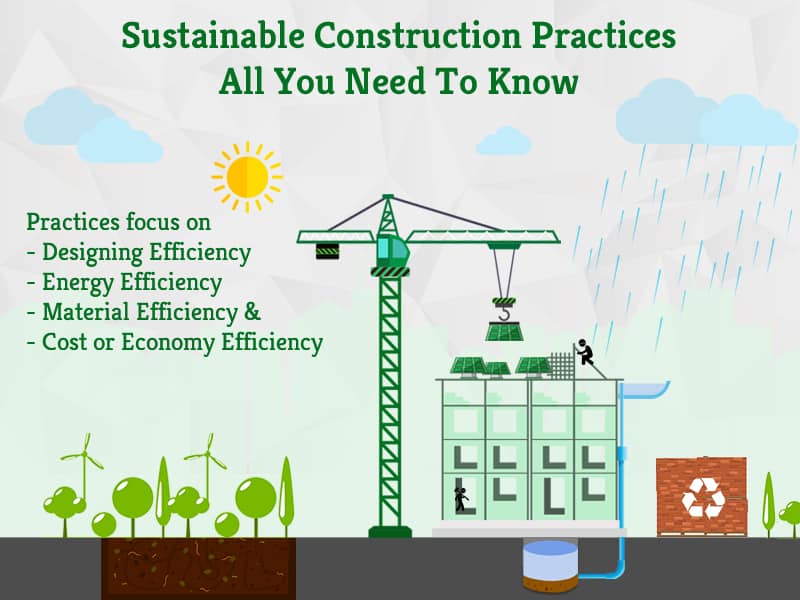Sustainable construction practices help counter climate change and global warming.

Standard construction practices heavily contributes towards air pollution, water pollution and waste generation as they constantly require and consume:
- Cheap Oil
- Regular Logistics
- Several types of materials
- Large amounts of electrical energy
- Large amounts of water
Because of their direct impact on the environment, adapting of sustainable construction practices has become a need of the hour.
Sustainable Construction Practices can be referred to practices that are environmentally responsible & resource efficient throughout the projects life-cycle. These practices usually fulfill most of the following criteria:
- Enhancement of local flaura and fauna
- Effective and efficient use of resources
- Measures for pollution reduction
- Incorporation of renewable sources of energy
Sustainable Construction Practices include:
- Smart Designing Methods and Considerations
- Use of latest technologies such as BIM (Building Information Modelling) can help estimate requirement of materials at every stage. This reduces the chances of over ordering of materials which may then end up becoming waste.
- Designing Insulation for the entire project can help prevent in energy loss. This can be done by using materials with good insulation properties, using insulating materials over standard elements and adapting the concepts of cool roofs. This helps in reducing the demand for energy required for regulating temperatures.
- Smart placement of windows throughout the structure can further help in avoiding energy loss. This would be achieved as the windows could provide sufficient sunlight reducing the dependency on artificial light. Also, the correct configuration of the windows thickness wise could also help add insulation within the project.
- Designs should also integrate systems such as net metering, rainwater harvesting, waste management among others. Having integrated these systems should help to reduce the overall footprint of the structure. This would also reduce several costs during the life-cycle of the project.
- Adding trees, plants, gardens to the project would help improve the air quality in and around the project.
- Design should also account for the reuse of grey water for purposes of domestic purposes and or irrigation of plant life within the project. This helps reduce the demand of water.
- Use of recycled or sustainable materials
- Construction involves the use several types of materials most of which are procured or produced using conventional methods that lead to global warming.
- Materials like bricks or block made from construction waste would have a lesser impact on the environment as it would reduce the manufacturing demand of conventional bricks or blocks.
- Use of an appropriate substitute for naturally occurring materials likes river sand should be made. Since procuring of river sand actually has a negative impact on the environment, this would help conserve it.
- Use of prefabricated elements during the construction process would also benefit overall since there would be limited to no generation of waste.
- Use of harvested rainwater during construction
- Construction practices are heavily dependent on the use of water for purposes such as curing of concrete, preparation processes and cleaning. Using water harvested from the rain for construction practices can help conserve the local water resource.
Summary

Article Name
Sustainable Construction Practices : All you need to know
DescriptionPractices that are environmentally responsible & resource efficient throughout the projects lifecycle are referred to as Sustainable Construction Practices.
Author
Team GreenSutra
Publisher Name
GreenSutra
Publisher Logo
